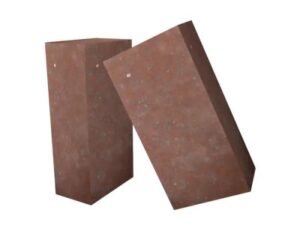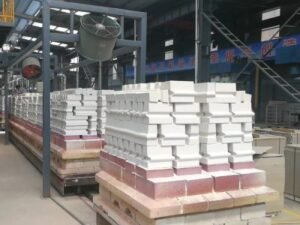What are the commonly used refractory materials?
The common refractory materials we widely use in daily life include silica bricks, semi-silica bricks, clay bricks, high-alumina bricks and magnesia bricks.

In the field of special materials, we often use high-performance materials such as AZS bricks, corundum bricks, and directly bonded magnesia-chrome bricks. In addition, silicon carbide bricks, silicon nitride bonded silicon carbide bricks, and non-oxide refractory materials such as nitrides, silicides, sulfides, borides, and carbides are also highly respected. At the same time, refractories such as calcium oxide, chromium oxide, aluminum oxide, magnesium oxide, and beryllium oxide also play an important role in specific applications.
In order to meet the insulation needs, diatomite products, asbestos products, and insulation boards and other insulating refractory materialsInsulating Materials are also our common choices.
In terms of amorphous refractory materials, we often use furnace fillers, refractory ramming materials, refractory castables, etc. In addition, refractory plastics, refractory mud, refractory gunning materials, refractory projection materials, refractory coatings and lightweight refractory castables also occupy a place in daily applications. At the same time, materials such as gun mud and ceramic valves also play an indispensable role in specific occasions.
What are the physical properties of refractory materials?
The physical properties of refractory materials cover many aspects: first of all, structural properties, which involve porosity, bulk density, water absorption, air permeability and pore size distribution, which together constitute the structural basis of the material.
In terms of thermal properties, the performance of refractory materials is measured by parameters such as thermal conductivity, thermal expansion coefficient, specific heat, heat capacity, thermal conductivity and thermal emissivity, which determine the stability and thermal conductivity of the material in high temperature environments.
The mechanical properties of refractory materials are related to their pressure resistance, tensile strength, flexural strength, torsion strength, shear strength and impact strength, as well as wear resistance, creep resistance, bonding strength and elastic modulus, which are important indicators for evaluating whether the material can withstand various external forces and maintain shape stability.
When it comes to performance, we must consider refractoriness, load softening temperature, reburning line change, thermal shock resistance, slag resistance, resistance to various chemical attacks such as acid, alkali, water, CO, as well as conductivity and oxidation resistance. These properties determine the reliability and durability of refractory materials in practical applications.
Finally, the operating performance of refractory materials includes its consistency, slump, fluidity, plasticity, adhesion, resilience, cohesion and hardening, etc. These characteristics have a vital impact on the processing, molding and performance of the final product. By comprehensively considering these properties, we can comprehensively evaluate whether the refractory is suitable for a specific industrial application.
In practical applications, the selection and use of refractory materials is a profound knowledge, which requires us to comprehensively consider various factors to ensure the smooth progress of industrial production.

